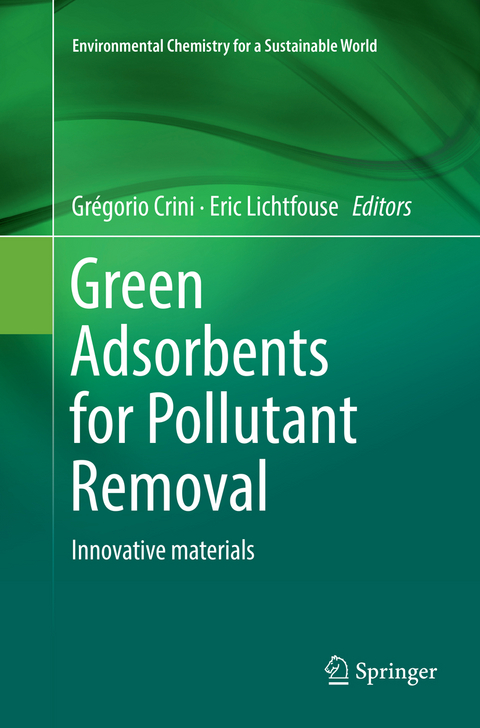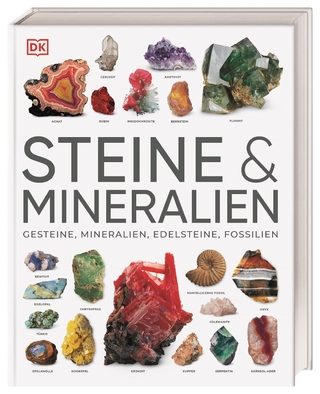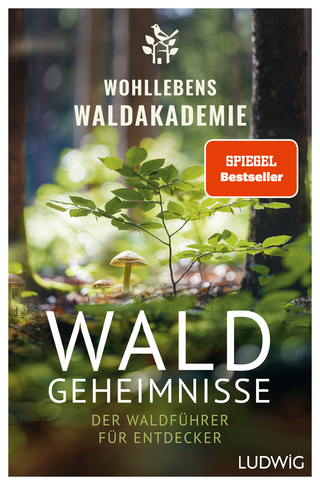
Green Adsorbents for Pollutant Removal
Springer International Publishing (Verlag)
978-3-030-06373-3 (ISBN)
This is the second volume on adsorption using green adsorbents and is written by international contributors who are the leading experts in the adsorption field. Together with the first volume they show a typical selection of green materials used in wastewater treatment, with emphasis on industrial effluents. This second volume focuses on innovative materials.
It presents hemp-based materials for metal removal, and the use of leaves for metal removal. It describes the biosorption of metals and metalloids on various materials and discusses the recent advances in cellulose-based adsorbents used in environmental purposes. Furthermore, activated carbons from food wastes, aerogels and bones, and municipal solid waste biochar as efficient materials for pollutant removal, respectively are reviewed as well as biosorption of dyes onto microbial biosorbents and the use of mushroom biomass to remove pollutants are looked at. The volume also includes detailed review of green adsorbents for removal of antibiotics, pesticides and endocrine disruptors and the use of pillared interlayered clays as innovative materials for pollutant removal. Finally, the use of green adsorbents for radioactive pollutant removal from natural water is discussed.
The audience for this book includes students, environmentalists, engineers, water scientists, civil and industrial personnel who wish to specialize in adsorption technology. Academically, this book will be of use to students in chemical and environmental engineering who wish to learn about adsorption and its fundamentals. It has also been compiled for practicing engineers who wish to know about recent developments on adsorbent materials in order to promote further research toward improving and developing newer adsorbents and processes for the efficient removal of pollutants from industrial effluents. It is hoped that the book will serve as a readable and useful presentation not only for undergraduate and postgraduate students but also for the water scientists and engineers and as a convenient reference handbook in the form of numerous recent examples and appended information.
Dr. Grégorio CRINI, 52, is researcher at University of Bourgogne Franche-Comté, UMR Chrono-environnement, Besançon, France. His current interests focus on the design of novel polymer networks and the environmental aspects of polysaccharide chemistry. He published over 180 papers in international journals and books, and he is a highly cited researcher. The total citation of his publications is over 7500 according to ISI Web of Science, h-index: 32. Eric Lichtfouse, 58, is a biogeochemist at the University of Aix-Marseille, CEREGE, Aix-en-Provence, France. He got a PhD in organic geochemistry at the University of Strasbourg in 1989 for the discovery of new fossil steroids in sediments and petroleum. He has invented the 13C-dating method allowing to measure the dynamics of soil organic molecules. He is Chief Editor of the journal Environmental Chemistry Letters and former Chief Editor of the journal Agronomy for Sustainable Development. He has published the book Scientific Writing for Impact Factor Journal, describing the micro-article, a new tool to identify the novelty of experimental results. He has published 85 research papers, with an h index of 23, and edited more than 50 books. He got the Analytical Chemistry Prize of the French Chemical Society, the Grand University Prize of Nancy University and a Journal.
1. Hemp-based materials for metal removal.- 2. Biosorption of metals and metalloids.- 3. Leaf biosorbents for the removal of heavy metals.- 4. Cellulose based green adsorbents for pollutant removal from waste water.- 5. Activated carbon from food waste.- 6. Water depollution using activated carbon from aerogels and bones.- 7. Municipal waste biochar for energy and pollution remediation.- 8. Dye removal using microbial biosorbents.- 9. Mushroom biomass and spent mushroom substrate as adsorbent to remove pollutants.- 10. Green adsorbents for removal of antibiotics, pesticides and endocrine disruptors.- 11. Pillared interlayered clays for pollution remediation.- 12. Green adsorbents for radioactive pollutants removal from natural water.
| Erscheint lt. Verlag | 21.12.2018 |
|---|---|
| Reihe/Serie | Environmental Chemistry for a Sustainable World |
| Zusatzinfo | XIII, 399 p. 79 illus., 55 illus. in color. |
| Verlagsort | Cham |
| Sprache | englisch |
| Maße | 155 x 235 mm |
| Gewicht | 853 g |
| Themenwelt | Sachbuch/Ratgeber ► Natur / Technik ► Natur / Ökologie |
| Naturwissenschaften ► Biologie ► Ökologie / Naturschutz | |
| Naturwissenschaften ► Chemie ► Technische Chemie | |
| Wirtschaft ► Betriebswirtschaft / Management ► Unternehmensführung / Management | |
| Schlagworte | Aerogels • Antibiotics • Biochar • Biosorption • carbon • Cellulose • Dye Removal • endocrine disruptors • Food waste • Green adsorbents • Heavy metals • HEMP • Mushroom biomass • Pesticides • Pollution Remediation • Radioactive pollutants removal • Waste water • Water depollution • Water Quality and Water Pollution |
| ISBN-10 | 3-030-06373-9 / 3030063739 |
| ISBN-13 | 978-3-030-06373-3 / 9783030063733 |
| Zustand | Neuware |
| Haben Sie eine Frage zum Produkt? |
aus dem Bereich


